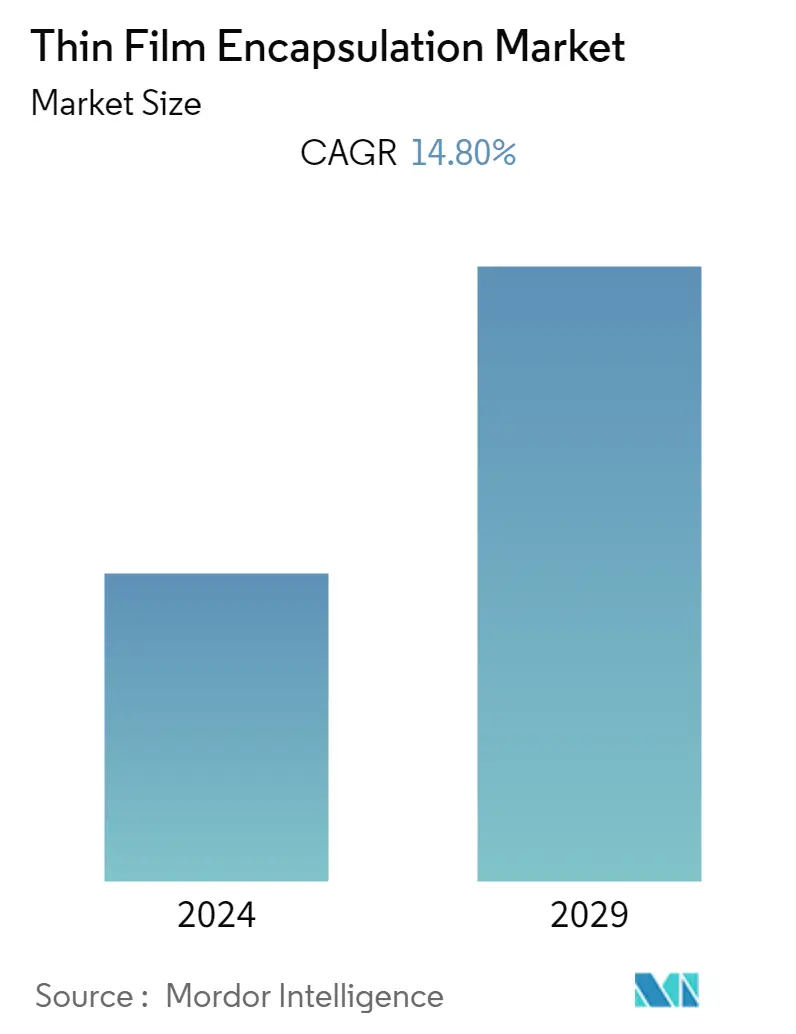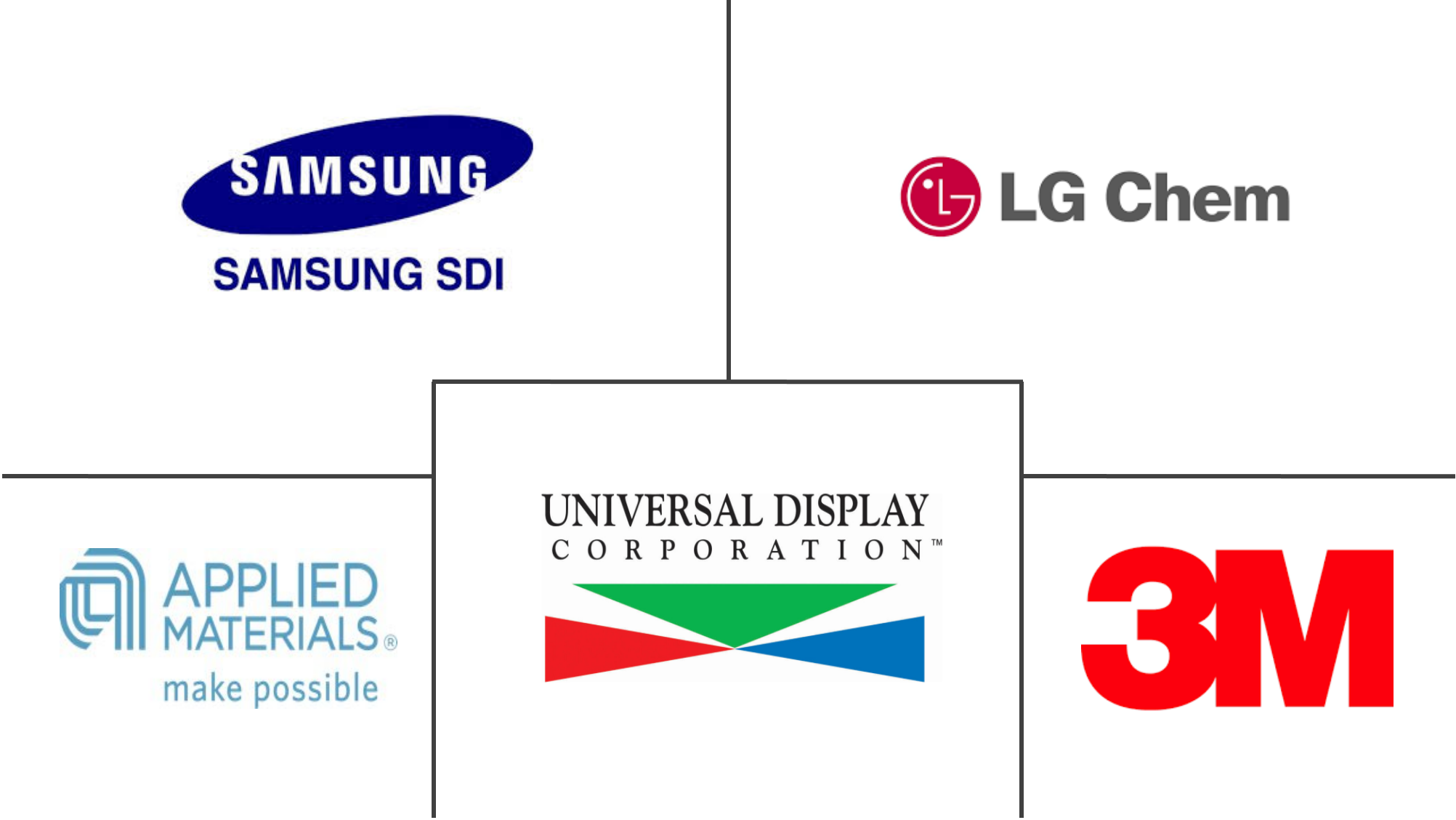Market Size of Thin Film Encapsulation Industry

| Study Period | 2019 - 2029 |
| Base Year For Estimation | 2023 |
| CAGR | 14.80 % |
| Fastest Growing Market | Asia Pacific |
| Largest Market | Asia Pacific |
| Market Concentration | Medium |
Major Players
*Disclaimer: Major Players sorted in no particular order |
Need a report that reflects how COVID-19 has impacted this market and its growth?
Thin Film Encapsulation Market Analysis
The Thin Film Encapsulation (TFE) market is projected to grow by registering a CAGR of 14.8% during the forecast period. Progress in the requirement for the thin-film barrier in numerous flexible devices, growth in the adoption rate of flexible OLED displays for smart devices, and growth capital investments in OLED technology have been driving the global thin-film encapsulation (TFE) market. On the other hand, a lack of technological knowledge and the augmentation of flexible glass technology may hinder the global market. The demand for flexible OLED lighting is expected to increase as the adoption of OLED lighting in automotive applications proliferates during the forecast period.
- Thin-film Encapsulation (TFE) is based on a multilayer film composed of alternate organic and inorganic layers. The inorganic layers are typically metal oxides and serve as moisture barriers. These layers are almost impenetrably substantial barriers but are mechanically rigid and brittle. Furthermore, these layers would naturally have pinhole defects, allowing water and oxygen in the long run. Organic planarization interlayers are used in standard TFE structures to improve the mechanical properties of the multilayer (flexibility without delamination) and limit water permeation through the pinholes to some extent.
- TFE has the strength to replace the front glass layer with a thin-film barrier present in an OLED device. OLED material is very susceptible to degeneration when exposed to different environmental factors such as water and air. Successful TFE commits to enabling flexible OLED and decreasing cost by replacing glass as the substrate material ending in a lighter and thinner display.
- Technological innovations, growing investments, and IP protections have significantly affected the TFE market over the ages. In combination with enhanced flexibility and robustness, decreased device thickness, cheap cost, and weight are the significant benefits of TFE technology. The latest technologies, such as atomic layer deposition (ALD) and inkjet printing, are anticipated to impact the market during the estimated period. The price of the raw material license, cost of equipment, and optimization in several processes have further driven the market.
- With the rise of wearable devices, flexible active-matrix OLEDs have emerged as the future display technology. Because of their inherent rigidity, conventional encapsulation methods are unsuitable for protecting flexible devices, and Thin Film Encapsulation (TFE) has been regarded as the most promising technology. Furthermore, in recent years, many automotive companies have colluded with lighting companies to produce car OLED lighting solutions. OLED lighting solutions can give better efficiency than traditional incandescent lighting; they also provide opportunities to put a light in new and seldom startling places that are only beginning to surface in the quickly growing field, which could further boost the Thin Film Encapsulation market.
- However, technical innovations in display technologies, such as flexible glass, are expected to challenge the growth of the studied market. For instance, with new high-yield mass-production equipment and the advent of new materials and fabrication technologies, OLED technology would enable the next leap in new flexible products, providing freedom from glass substrates.
- The COVID-19 pandemic disrupted supply chains and influenced the purchasing decisions and the spending behavior of end-user industries. Furthermore, the pandemic also halted production and other operations in the manufacturing sector. The global thin film encapsulation market has had a negative impact on COVID-19. Lockdown measures reduced demand for electronic gadgets, which had a global impact on the semiconductor sector. The continued decline in worldwide demand and automobile export shipments negatively impacted the market, slowing the demand for semiconductor manufacturing equipment.
